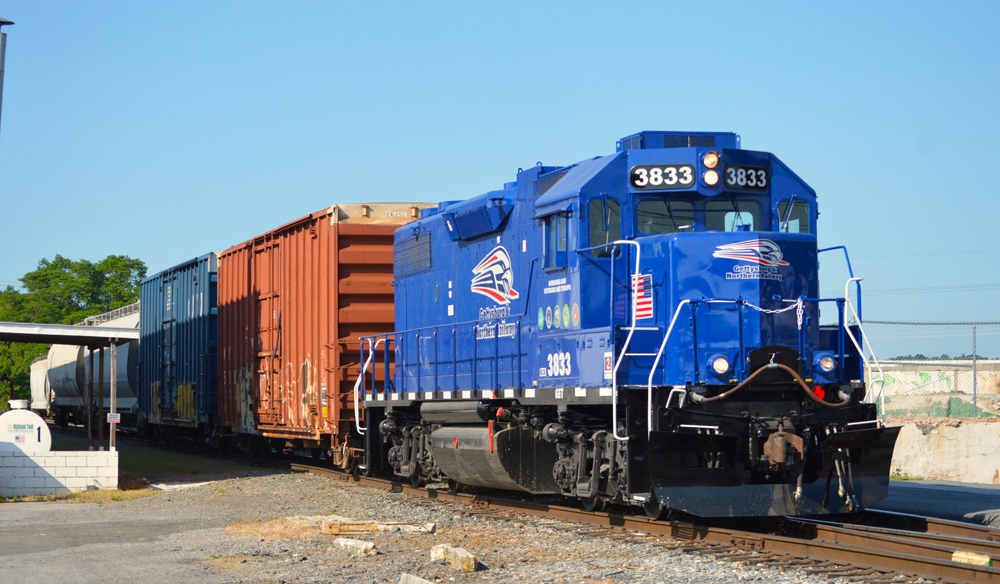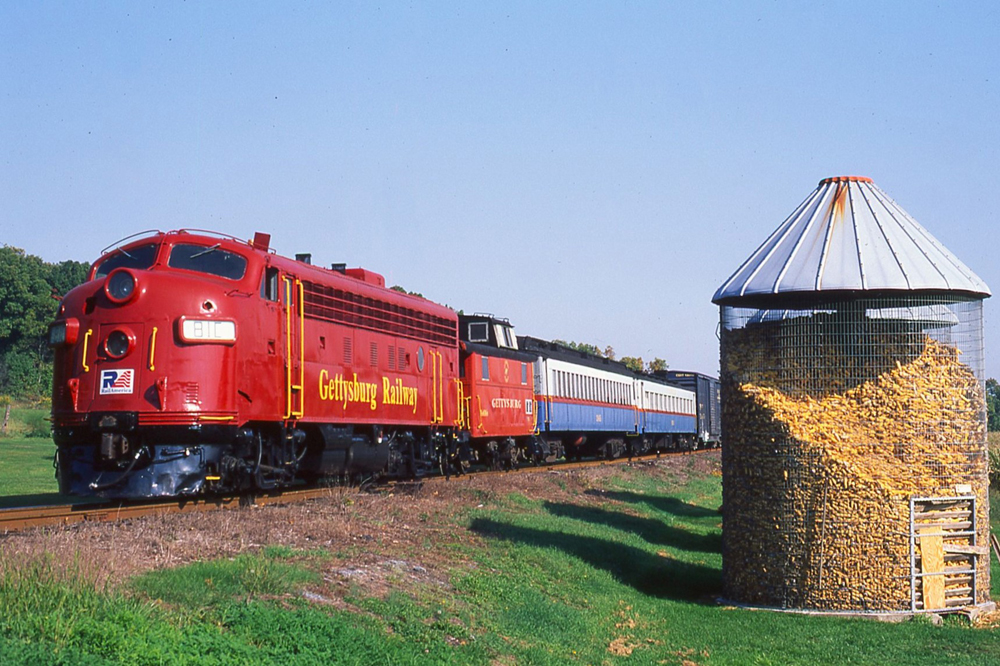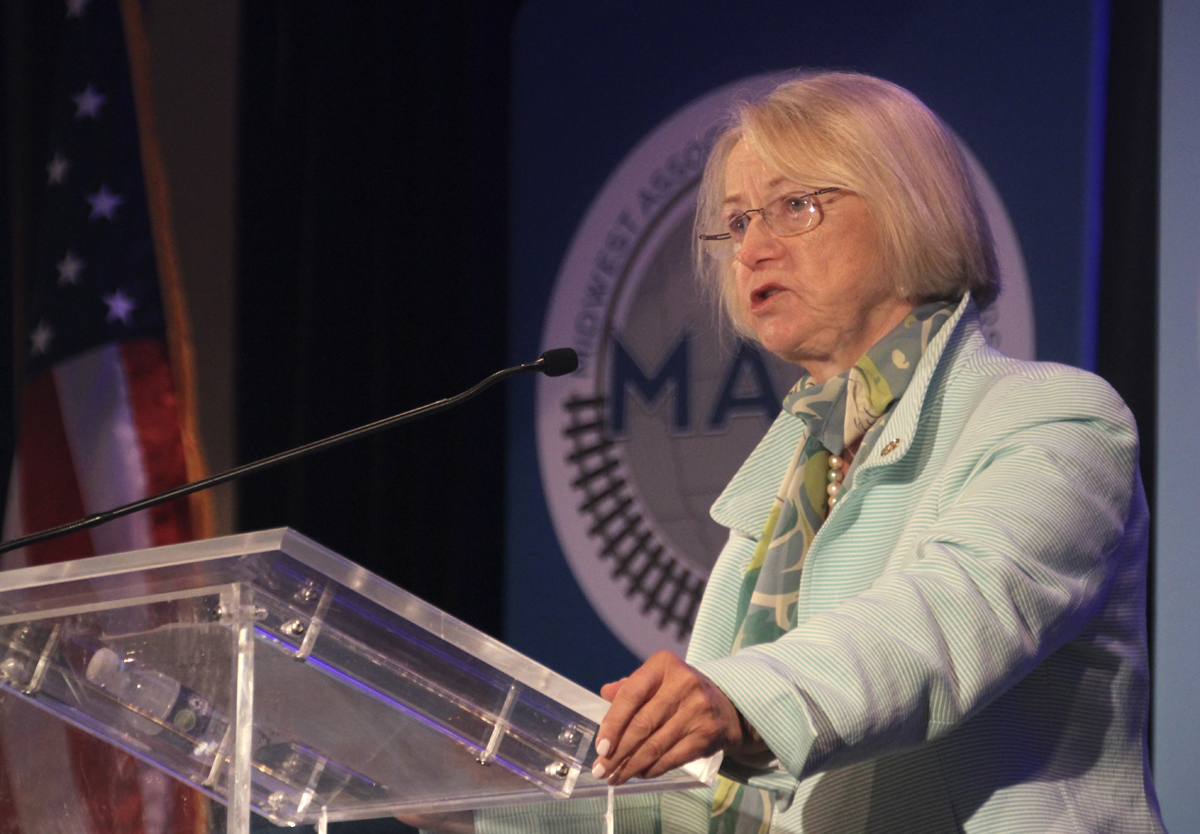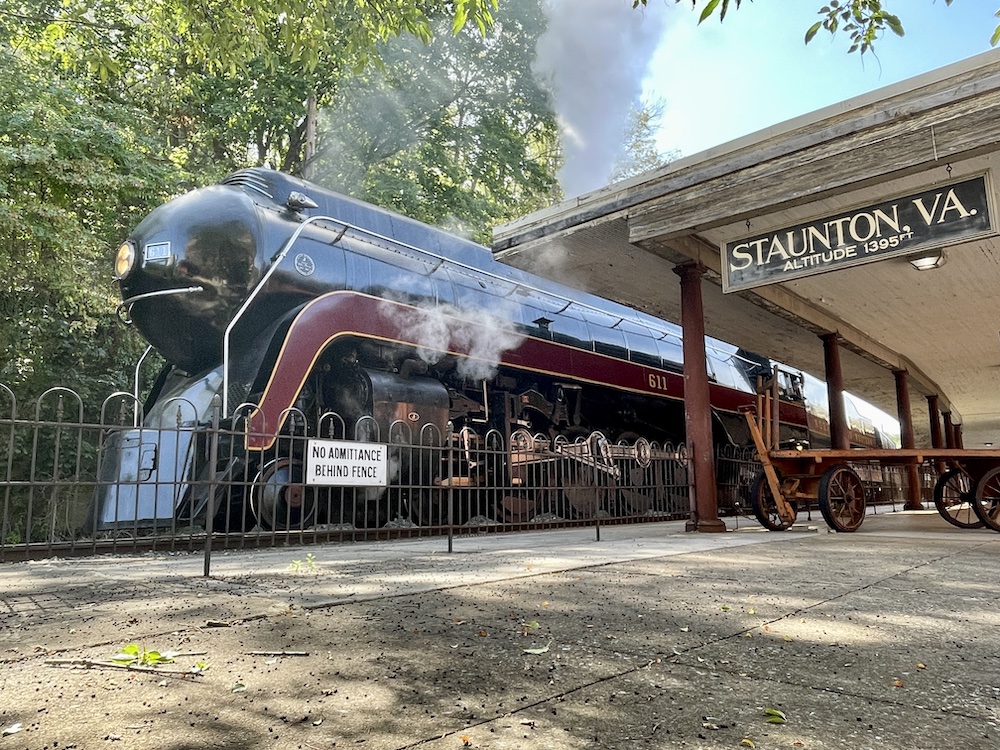
GETTYSBURG, Pa. — Patriot Rail, a short line company that operates 32 railroads across the United States, is planning to revive passenger service on the Gettysburg & Northern Railroad in 2025, to capitalize on the millions of tourists who pour into this Civil War mecca each year.
G&N will join two other active Patriot Rail tourist lines, Blue Ridge Scenic Railway in Georgia and Granite State Scenic in New Hampshire, recently rebranded from its previous name, Hobo Railroad.
The 25-mile-long former Reading Co. branch connects Norfolk Southern’s Lurgan District (part of NS’s New Orleans-to-New Jersey Crescent Corridor) at Mount Holly Springs, Pa., with CSX Transportation’s former Western Maryland Railway “Dutch Line.” Since it was spun off as an independent freight carrier at the creation of Conrail in 1976, it has seen a succession of passenger operations: Gettysburg Railroad, Gettysburg Scenic Railroad, and Pioneer Lines Scenic Railway, the latter running from 2004 to 2008 while the line was owned by Pioneer Railcorp.

Since the line was divested from Reading in 1976 — initially as a state-subsidized light-density branch — it has always carried freight, passing through a fertile fruit-growing and packing area. Operating five days a week, G&N hauls chemicals, minerals, and pulpboard. Jacksonville, Fla.-based Patriot Rail acquired the former Pioneer Lines in 2022 [see “Patriot rail completes acquisition …,” Trains News Wire, Sept. 15, 2022].
The line passes through a portion of Gettysburg National Military Park, site of the July 1-3, 1863, Battle of Gettysburg, often called the high-water mark of the Confederacy and the turning point of the Civil War. The town is also home to the national military cemetery where President Abraham Lincoln delivered his Gettysburg Address on Nov. 19, 1863. The park alone draws more than a million tourists a year.
David Bevins, Patriot Rail vice president of operations and a licensed locomotive engineer with long experience on CSX Transportation, said the company plans to start passenger service over about 8 miles between Gettysburg and Biglerville. On this stretch, the track passes fields on which the first day of the conflict unfolded, with battle lines formed by both Union and Confederate troops.
A teaching moment
Believing that the trackside geography is a rich history lesson waiting to be unfolded for passengers, Bevins sees “opportunities to help teach the history of the battle and the town and the area.
“We’re very fortunate to be located there,” he said. “It seemed like a logical next step for the company to look to [start] a scenic operation, with the tourists and the beautiful scenery. We’re hoping that it’ll be a success.”
To prepare, he said, Patriot Rail “bought eight Budd-built cars, all sleepers, and we’re reconfiguring them. Initially there will be four or five, with different classes of service.” Being rebuilt by contractors, these cars will include accommodations for large families and an adult-only section. The cars will offer seating for 250 passengers and will be equipped with ADA-compliant restrooms.
Numbered to pay homage to the Civil War years, the passenger cars include former Pennsylvania Railroad Elmira Inn (GETR 1862) and Coatesville Inn (GETR 1863) and former Norfolk & Western Duke University (GETR 1865, renamed The Patriot). All three were built in 1949-1950, and all were rebuilt to coaches by PRR for 1964-65 New York World’s Fair service. Additional cars are former Cedartown (GETR 1864, built by Budd 1955 for Seaboard Air Line, then Seaboard Coast Line, Auto-Train, then Ringling Brothers and Barnum & Bailey), and a former Amtrak baggage car (GETR 1860) that’s being converted into a power car and commissary.
Motive power, Bevins said, will consist of EMD GP9 or GP38 units painted deep navy blue with stainless-steel accents, similar to units now assigned to G&N freights.
Patriot Rail plans to build on experience gained in running its Blue Ridge Scenic Railway, which last year carried a record 142,000 passengers between Blue Ridge, Ga., and the twin towns of McCaysville, Ga., and Copperhill, Tenn., on a 13-mile segment of a former Louisville & Nashville line. Like those trains, G&N tourist trains will run in push-pull configuration.
Bevins credited a local economic development and tourist promotion agency, Destination Gettysburg, as well as the borough and adjacent Gettysburg College, with helping to relaunch the service.
Plans include using the former Gettysburg Railroad station off Washington Street, a former Buffalo, Rochester & Pittsburgh depot from Rockton, Pa., that former owner Sloan Cornell transplanted twice, first to his early-1960s Penn View Mountain steam railroad in western Pennsylvania, then to Gettysburg. To supplement the small building (Rockton on the BR&P had a 1920 population of 132 people), Bevins said the company plans to erect an adjacent covered heated pavilion with seats as a staging area.
Also, the railroad reached an agreement with the college to use excess capacity in the school’s overflow parking areas, a half-block away. A lighted, fenced walkway is planned. Ample tour-bus parking is planned, and a nearby parking garage offers more space. On the railroad side of preparations, Bevins said, G&N is getting ready to refurbish a siding next to the depot.
Initial plans call for operation Thursdays through Sundays, with more frequency in summer peaks.
Reading’s legacy in Gettysburg
Although the former Reading offered minimal regularly scheduled passenger service on the Gettysburg Branch, when the occasion called for it, the road went to extraordinary lengths. When a four-day 50th-anniversary reunion of thousands of Civil War veterans gathered in 1913, the Reading hired 150 men, added four sidings, and installed automatic block signals. The line at that time extended 2½ miles farther south, with the Round Top Branch (double-tracked for the occasion) running directly into the heart of the battlefield. The Reading handled 38,000 passengers, and 14,000 more from the WM over the Round Top Branch. Reading abandoned the battlefield tracks in 1942.
Scheduled passenger service from Harrisburg ended behind Reading camelback 4-6-0 steam engine No. 615 on April 27, 1947, but from 1960 to 1964, the Reading ran 19 Iron Horse Rambles behind T-1-class 4-8-4 steam engines to Gettysburg from points as far away as Philadelphia, 158 miles.
Gettysburg Railroad, unfortunately, is remembered for having been the operator of former Canadian Pacific 4-6-2 steam locomotive No. 1278, whose firebox crown sheet failed on June 18, 1995, due to improper maintenance and insufficient training. The resulting explosion prompted a National Transportation Safety Board investigation, with the tourist railroad industry and the Federal Railroad Administration cooperating to tighten, update, and codify federal rules to promote the safe operation of steam engines.














was this tourist train 8 miles or was it longer than 8 miles ?
It’s 25.0 miles from Carlisle Jct. to Gettysburg. Carlisle Jct. is the junction with the PH&P Branch from Harrisburg. PH&P Branch continued to Hagerstown via WM at Lurgan and via PRR at Pennroad.
The Gettysburg and Carlisle Branch actually continued North after passing under RDG’s PH&P Branch (NS Lurgan District) and went a few miles to Carlisle. There’s a nice grade at Hunter’s Run that gave a T-1 with 16 passenger cars a good workout.
That 1278 explosion I believe also killed Sloan Cornell’s son. Seminal for the industry. Same general idea is why we can no longer legally creep over bad track a low single-digit speeds. There a 15-mile line in NH that I NEED and would pay Good Money to ride over at two miles an hour flanged wheel on rail.
Had to do some research on the Penn Valley. It was a built-new tourist railroad, not built on an existing line and much like a serious version of an amusement park railroad.
Oh, I DO NEED the Gettysburg! 2025 you say; hope the world lasts that long!
The June 1995 boiler explosion was serious but did not kill anyone. The engineer, Jim Cornell (owner Sloan Cornell’s son) was severely burned and was hospitalized for weeks, maybe longer. The fireman and student fireman were hurt but their injuries were not critical. No passengers were injured. One of the most jarring aspects of the incident is that it was a dinner train and after the explosion, the railroad substituted a diesel and continued the run as if nothing had happened. Here’s the NTSB report:
https://www.ntsb.gov/safety/safety-studies/Documents/SIR9605.pdf
Cornell’s Penn View (not Valley) Mountain RR was a full-sized standard-gauge switchback line with an 0-6-0 and a 2-8-0, old transit cars that rode on freight trucks, and a PRR N6b wooden cabin car. I rode it as a teenager and while it had steep grades and sharp curves, I wouldn’t characterize it as anything resembling an amusement park railroad.